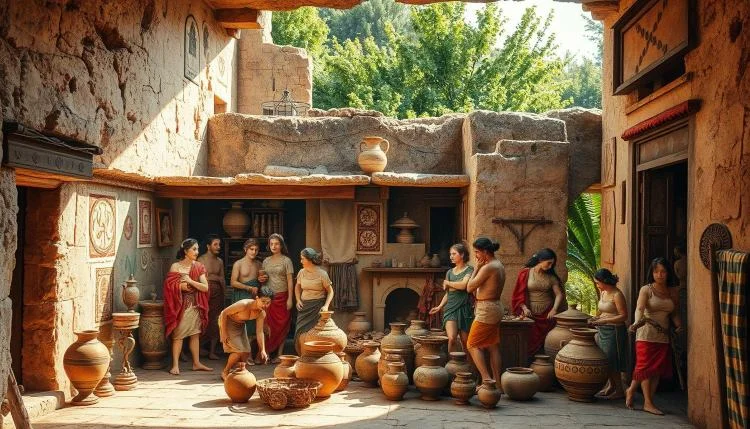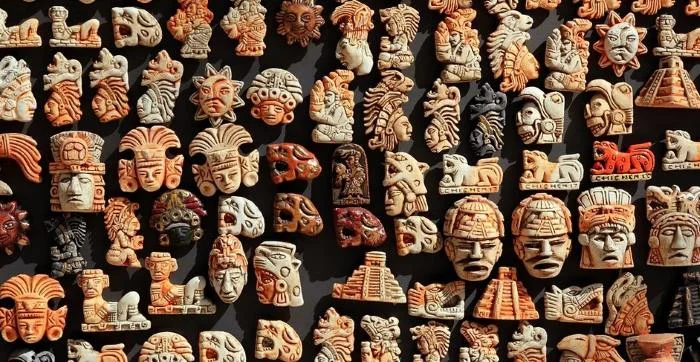Ancient Artz: A Timeless Journey of Beauty and Emotion
Ancient artwork serves as a kind of window into the past, revealing to us the way people lived, their beliefs, and their aesthetic preferences thousands of years ago. It is more than just antique paintings or statues; it is narrative conveyed through ceramics, architecture, and carvings.
Imagine exploring historic cities and admiring the elaborate carvings on temples or the vibrant murals on walls. Every work of art contains hints about the gods, heroes, and daily lives of past nations. Ancient art, from the Egyptian pyramids to the Greek pottery, helps us understand the past in a way that words alone sometimes can’t.
Ancient Arts: A Journey Through Time
The Foundations of Ancient Art

The foundation of human creativity is found in ancient art, which offers a diverse range of cultural expression that has influenced civilizations for thousands of years. The earliest art dates back to the Stone Age, when primitive humans used basic tools to paint pictures of their surroundings. Examples of this art include cave paintings and carvings. In addition to being decorative, these artworks frequently featured hunting scenes and animals, acting as a medium for storytelling and communication. They demonstrate the basic human urge to record and communicate experiences, reflecting the hopes, anxieties, and everyday lives of our ancestors.
Artistic expressions changed along with civilizations. Often called the “cradle of civilization,” ancient Mesopotamia created beautiful ceramics, cylinder seals, and complex sculptures. These artistic endeavors fulfilled utilitarian functions as well as aesthetic ones, such as keeping tabs on transactions or paying homage to deities. Comparably, the colossal architecture and hieroglyphs of ancient Egypt depict pharaohs and the afterlife, demonstrating a society that was closely associated with spirituality and the afterlife.
Trade and cultural exchange had an impact on the evolution of ancient art as well. Greek and Roman art demonstrates how the interchange of concepts and methods resulted in the merging of styles and traditions. Their interest in human form and emotion was evident in their sculptures and ceramics, which helped establish the foundation for the canon of Western art. Through their common artistic pursuits, ancient civilizations were connected through a centuries-long dialogue built by this foundation.
The Role of Religion in Ancient Art
Ancient art was created and preserved in large part because of religion. Art was a way for people in many cultures to demonstrate their reverence and devotion to the divine. Religious items such as altars and temples were frequently embellished with elaborate sculptures and decorations that reflected the societal values and beliefs. The pharaohs of ancient Egypt, for instance, were guaranteed a prosperous afterlife by the enormous construction of monuments such as the pyramids and temples devoted to their gods.
Mythology had a profound effect on ancient Greek art, resulting in the production of sculptures and ceramics featuring gods and heroes. These pieces functioned as storytelling tools as well as decorative items, bringing to life legends of valor, love, and sorrow.
In order to exalt their reign and proclaim their heavenly right to rule, emperors in the Roman Empire commissioned imposing statues and reliefs, continuing the union of art and religion. The idea of a link between the divine and the earthly was reinforced by the many depictions of mythological situations or the accomplishments of the Emperor in these works. Ancient cultures conveyed their values and ideas through these artistic manifestations, creating a legacy that still influences and inspires modern art.
The Evolution of Techniques and Materials

The methods and materials employed in ancient painting changed dramatically over time, mirroring changes in societal norms and technological breakthroughs. The vivid colors of cave paintings demonstrate how early artists produced their works using simple equipment and natural dyes. The techniques employed by societies evolved together with them; the advent of metallurgy and ceramics made it possible for increasingly intricate forms of artistic expression. The Greeks achieved the pinnacle of ceramic art, creating methods such as painting figures in black and red that demonstrated their exquisite sense of form and detail.
During the ancient era, sculpture likewise experienced a change from stylized to more realistic renderings of the human figure. As marble and bronze were used more frequently, artists were able to produce realistic features and minute details. Works that show the mastery of proportion and anatomy, such as Michelangelo’s David and Venus de Milo, are the epitome of this progression. In the history of sculpture, the creation of contrapposto—a stance that evokes movement and naturalism—marked a crucial turning point.
Ancient art employed materials and methods that were symbolic in addition to being useful. Vibrant colors were connected to certain feelings and ideas, while gold was frequently utilized in religious objects to represent divinity and purity. Precious materials were used in artwork to increase its aesthetic value and to show the strength and wealth of the society they represented. The continuous development of methods and supplies demonstrates the inventiveness and flexibility of prehistoric artists.
Influential Ancient Civilizations and Their Art
Many ancient civilizations contributed distinctive styles and innovations that have left an enduring impression on the world of art. Known for its elaborate hieroglyphs and colossal structures, ancient Egypt is arguably the most famous. The Egyptians’ building talent is demonstrated by the Great Pyramids of Giza, and their ideas about the afterlife are revealed by the paintings and sculptures found in their tombs. Ancient Egyptian art was primarily concerned with immortality; each work was designed to facilitate a seamless transition into the afterlife.
In the meantime, the Greeks achieved great progress in their depiction of the human figure, aiming for harmony, balance, and realism. Because painters aimed to depict both the aspirations of the human experience and the physical beauty of the human body, their work was closely entwined with philosophy. Greek society placed a high priority on physical prowess and divine perfection, which were mirrored in the sculptures of gods and athletes. Prominent creations like the discobolus, also known as the disco thrower, are prime examples of this quest for idealism and balance.
Realist and portraiture were the main artistic focuses of the Romans, who adopted and adapted Greek artistic traditions. Their art, which depicted emperors and common people in copper and stone, frequently praised individualism. Roman mosaics, which depicted scenes from mythology and everyday life, decorated public areas and private residences with their elaborate designs and vivid colors. Roman culture prioritized both functionality and aesthetic appeal, as evidenced by the art’s blend of artistry and practicality.
The Legacy of Ancient Art in Modern Times

Ancient art left a lasting legacy that continues to influence modern designers, architects, and painters. Modern artistic practices are still grounded in the proportion, balance, and composition principles established by ancient cultures. A lot of modern artists create works that fundamentally connect with viewers by drawing inspiration from ancient art’s exploration of issues like spirituality, the natural world, and the human condition.
Ancient architectural forms have influenced modern design as well. Columns, arches, and domes are features of Greek and Roman architecture that accentuate the grandeur of modern government buildings, museums, and even individual residences. The 18th-century Neoclassical style attempted to bring back the beauty of classical Greece and Rome, proving the perennial value of these artistic traditions.
Ancient artwork also acts as a potent reminder of the universality of human experience. We can better understand ancient civilizations’ customs, morals, and beliefs by studying their art, which helps us feel connected to them both geographically and temporally. Curiosity and discovery are sparked by the preservation and appreciation of old art, which encourages us to participate in the complex fabric of human history.







